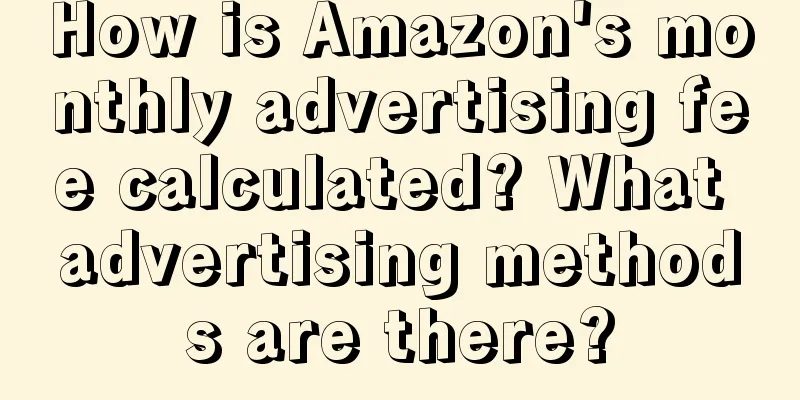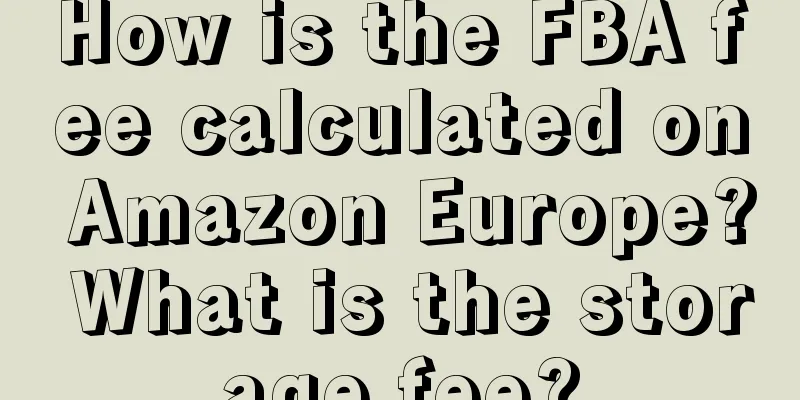Brand No. 1: Visual Hammer, the Essence of Design
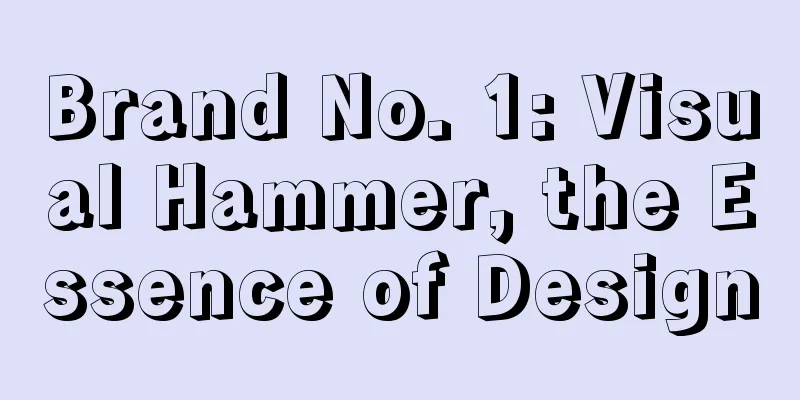
01The only thing entrepreneurs have to do is to make their company’s brand represent a category and dominate this category. Note: Why is it category? There are two aspects to consider. First, from the outside, because the purpose of the existence of an enterprise is to create consumers, and the way consumers think and express themselves is based on categories - to grasp the category is to grasp the consumer. Second, from the inside, the category answers the fundamentals of the enterprise's business and the boundaries of the enterprise's operations. In addition, the three classic questions of corporate management are: what is your business, what will your business be, and what should your business be. In essence, we need to return to the boundaries of categories and define the business. The order of thinking is: category - strategy - brand - business - product line - product. How to understand this order? First, the category boundary. Defining the category means defining the boundary of the business. There are opportunities and dividends every year. For entrepreneurs, this is a process of settling the mind. If the mind is not settled, it will be a complete failure. The second is strategy. What position do you want to occupy within the category? Then there is brand, business, product line, and finally product. Of course, the product is appearance, packaging, and pricing. 02For a brand to be successful, it needs not only a language nail, but also a visual hammer. Note: What is a language nail? It is the sentence that penetrates the mind. For Wanglaoji, it is: afraid of getting angry; for Head & Shoulders, it is: dandruff removal; for Robam range hood, it is strong suction. For your brand, what is the language nail that penetrates the mind? Since it is a word that penetrates the mind, then this sentence must first be in line with the mind, and secondly, it must mobilize common sense. For example, the "fire" in "fear of getting angry" is in line with the mind, and because it is in line with the mind, it can mobilize common sense. What is in line with the mind and what mobilizes common sense, if we use the words of Freud and Jung, it is: consciousness and collective unconsciousness. The collective unconscious refers to the long-term accumulation of universal psychological experience of mankind from generation to generation since primitive society. "It is neither generated from personal experience nor acquired by individuals, but is innate." This is a field of impersonal images that are preserved in the entire human experience and are constantly repeated. Next to the collective unconscious is the archetype. What is an archetype? Let me give you an example. For example, there is the "wise old man" archetype, which represents wisdom and is the image of wisdom. Zhuge Liang in the Romance of the Three Kingdoms and Wu Yong in Water Margin are archetypes in literary works (of course, they are also archetypes of the collective unconscious - the wise old man). Following the line of thought of archetypes, you can find similar images in many works (in Star Wars). Of course, there are many other "archetypes", such as "child", "mother", etc. Archetypes are "universal images that have existed since ancient times" and were formed in the most primitive stage of human beings. Archetypes are preserved as a kind of "racial memory", so that every individual has a series of images and patterns innately. He found that similar or even almost identical images and patterns would exist or appear in the minds of individuals with completely different cultural and social backgrounds, and he used archetypes to explain all of this. From Jung's collective unconscious archetype, the significance for business is: Archetypes are manifestations of the collective unconscious that have not been directly perceived in the long-term psychological accumulation of human beings. Therefore, they can enter the entire corporate brand strategy as a potential unconscious, discover archetypes, awaken the original force, and form a unique brand business culture of spells - symbols (visual hammers), spells (linguistic nails). The anchor of the mind is in Jung's archetype theory. However, the brand's symbols (visual hammer) and spells (linguistic nails) must be externalized (logo, slogan), presented at the same time and implicitly combined as a "primitive image", thereby stimulating the collective unconscious, awakening the archetype, and stimulating the brand's awakening of the force. 03The best way to drive a “verbal nail” into the mind of a potential customer is with the help of a “visual hammer.” Note: The language nail is the text, and the visual hammer is the concrete graphics. It corresponds to the (text) thinking of the left brain and the (graphic) processing of the right brain. Here - injecting the language nail into the mind - refers to the brand positioning, injecting it into the mind. That is: the way to inject brand positioning into the mind: language nail + visual hammer. It is necessary to distinguish between form and goal, and always serve the purpose, always serve around the purpose. Graphics should assist text, and text should bless graphics, complement each other, work together, and inject the text into the mind. So what is a visual hammer? For Yanghe, it is the blue color of Yanghe, for Coca-Cola, it is the curved bottle, and for herbal tea, it is the red can. In other words, the visual hammer is the spontaneous and conscious visual imprint of the brand that consumers have without any reminders (curved bottle, red can, Wuliangye crystal bottle, Maotai Mao-shaped bottle). When it comes to branding, most people probably think of brand. The earliest meaning of brand is the mark that farmers put on the buttocks of livestock. The question is, does a company’s logo become a brand, and then a visual hammer? The answer is obvious - no. Most brands have logos but not visual hammers. For example, the powerful suction range hood of Boss has a language nail but no visual hammer. Although in the print advertisement, the visual presentation of powerful suction of Boss is a white whale. Obviously, this (white whale) wants to express, interpret and annotate powerful suction, but the visual of the white whale seems to only convey "big" but not "powerful suction". If it is replaced with the visual presentation of a tornado, it is possible that - powerful suction (language nail) + tornado (visual hammer) - complement each other and work together to achieve the effect of text singing and picture following. In fact, the visual hammer is an extension of positioning, an annotation, interpretation, and blessing of the language nail. For this reason, the visual hammer cannot be separated from the brand positioning, and the visual must be presented around the brand positioning. In other words: the visual transmission separated from the brand positioning is at best a logo - most brands only have a big logo, and a few brands have a visual hammer. Another example: the red can dispute between Jiaduobao and Wanglaoji is essentially because the red can occupies the visual memory of consumers for herbal tea (category). The red can is a visual hammer, and the fear of getting angry is a language nail. The essence of the red can dispute is a battle for the minds of potential users. However, in this vigorous battle for the minds of herbal tea, the first to fall was not Wanglaoji, nor Jiaduobao, but Heqizheng. The first and the second fought, and the third (Heqizheng) became the victim. Why is this so? In essence, it is because the overwhelming advertising of Jiaduobao and Wanglaoji has continuously clarified the potential consumers' perception of herbal tea brands (from herbal tea categories to herbal tea brands). Oh, Heqizheng - it turns out that you are not authentic, so I am sorry not to buy from you. People are like this, you see: even if we eat instant noodles, we want big brands. I eat Master Kong, awesome - just like what Huang Bo said in "Crazy Stone" - brand, Baleno. The red can is a visual battle, and the authentic herbal tea behind it is the direction of the battle. This is what Sun Tzu's Art of War said: If you know the place of battle and the day of battle, you can fight a thousand miles away. The essence of competition is to occupy a favorable position, and the tools to occupy this favorable position are language nails + visual hammers. In Lao Gao's words, it is to form a unique brand business culture of symbols and spells - symbols (visual hammers) and spells (language nails). 04In the Coca-Cola commercial, images convey the message more effectively than words. This is the function of the visual hammer. Note: Whether it is a picture or a design, the purpose is to meet the aesthetic requirements, and more importantly, to meet the purpose. This purpose is not the design itself, but comes from outside the design work - the purpose of being a business entity - to effectively convey business intentions. Commercial intentions are meant to be exaggerated, not hidden. Simply put: the purpose of design is to sell goods. It is difficult to satisfy everyone whether it looks good or not. Selling goods is a matter of life and death. Selling goods is a hard truth and a hard indicator. Because the purpose of the commercial subject determines the purpose of design. This is a subordinate relationship. If you know who you are serving, you won't vent your anger all day long over whether it looks good or not, or whether it is low-end. Therefore, the visual hammer is also used to sell goods. Through the visual hammer + language nail, the accurate information that the brand positioning wants to convey is completed, occupying the mind - selling goods. Images are more effective than words in conveying information. To be more precise, images and words are both tools for conveying information and selling goods. Images are easier to "see", but even if words are seen, they still need to be "understood". In the few seconds when consumers' attention stays for a short time, to increase the concentration of information per unit time, images + words (visual hammer + language nail) are needed. What is the visual hammer of Coca-Cola? It is the curved glass bottle. Although we rarely see Coca-Cola in glass bottles now, the original curved glass bottle has been repeatedly appearing in Coca-Cola's 107-year commercials. On the contrary, Coca-Cola's slogan has changed about 57 times in these 107 years of commercials. For example: Thirst has no season in 1922 (the 11th year of the Republic of China); Enjoy a refreshing moment in 1929; With Coke, everything will go well for you in 1963; This is the real deal in 1969. Which of these four slogans is better? We say that the essence of advertising is information, and the core of information is to convey a clear brand position. The essence of commercial competition is to occupy a position that is advantageous to oneself. Thirst has no season; enjoy a refreshing moment; with Coke, everything will go well for you. These three slogans all convey product information to some extent. But none of them are unique enough. What if these three slogans are changed to Pepsi? Pepsi-Cola, thirst has no season; Pepsi-Cola, enjoy a refreshing moment; With Pepsi by your side, everything will go well for you Is there no sense of violation? This is what we said above: the essence of advertising is information, and the core of information is to convey a clear brand position. Among these four slogans, only the one in 1969, Coca-Cola, is the authentic one - it did the right thing (advertising) and clearly conveyed the brand position - the authentic one. 05A visual hammer does more than just repeat your brand name; it nails a specific word into the customer's mind. Note: A specific word here refers to positioning. Visual hammer is to nail positioning into the minds of customers. Why, repeating the brand name is far from enough. Hengyuanxiang, Sheep Sheep Sheep; Hengyuanxiang, Cow Cow Cow; Hengyuanxiang, Rabbit Rabbit Rabbit, 15-second advertisement, the efficiency of repetition of Cow Cow Cow, Sheep Sheep Sheep is high, but the effect of repetition may not be that high. Being well-known is better than being unknown Recognition is better than fame What is Hengyuanxiang, what are its features and differences? I thought about it, but I still don’t know what Hengyuanxiang is and how it is different. Positioning = brand name + category + characteristics. Half of your advertising expenses are wasted on just repeating the brand name without consciously blocking the category and occupying the characteristics. We could have done better, and we should have done better. To be precise: the visual hammer is not to present the brand name, but to assist the language nail. Through the language nail + visual hammer, the purpose of strengthening positioning cognition is achieved. The first move must be clear about the purpose, and the second move always serves the purpose - it is said that you should not forget your original intention, but many things are done and the original intention is no longer there, and they are only for profit. For example, Nike’s hook does not convey the brand name of Nike, but conveys the leadership of the Nike brand. Through the top athletes (Tiger Woods) who continue to wear sportswear with the Nike logo and perform well on the court, Nike has instilled the “hook” into people’s minds. 06The reason most marketing slogans are weak is that they may express an important benefit of the brand, but unless they are reinforced with a visual hammer, they are basically useless. Annotation: Guo Degang said: In the crosstalk business, there is no one who is better than anyone else, there are only those who can and those who can’t, and the same is true in the marketing business. Marketing slogans must first be correct, secondly they must be shouted loudly, and also they must be shouted for a long time. Whether it is right, loud, or long, if it is right, loud, and long, it will naturally turn from virtual to real. If there is a universal truth in advertising, it is repetition, repetition, and repetition again. Only by repeating it tirelessly can it become familiar to the audience. In addition to slogans (text, sound), there must also be visuals. Whether it is a poster, a door sign, or a media advertisement, only text and sound are not enough, and visual reinforcement is indispensable - a gentleman will do everything to the extreme, only then can he achieve perfection. That is: the presentation of text, the performance of sound, and the reinforcement of vision are all indispensable. Here we need to talk about the four dimensions of advertising slogans: text, sound, music, and music. In ancient times, music was used to make rituals: rituals without music were not rituals, and music without rituals was not music. Throughout history, every monarch who worked hard for the people and punished evil had his own music. When Dayu controlled the flood, the people were happy, so Shun ordered Gao Yao to compose the nine chapters of "Xia Die" to commend his achievements. When Tang of Shang defeated Jie and brought peace to the people, Tang ordered Yi Yin to compose the dance of "Da Hu" and the song of "Chen Lu" to show his kindness. In the Battle of Muye, King Wu defeated Shang, so he ordered Zhou Gong to compose "Da Wu". During the reign of King Cheng, the people of Yin rebelled and used elephants to abuse the Dongyi. Zhou Gong was ordered to march east and drive them away, so he composed "Three Elephants" to praise their virtue. Confucianism pays particular attention to the influence of music on people's hearts, and advocates that music should be beneficial to people's education rather than to stimulate the senses. Music dominated by the way of the gentleman is beneficial to human progress; music dominated by satisfying sensory stimulation will lead society to chaos. That's why there is the story of the red sun rising in the east... That's why there is the story of spring... People are governed by music, and rituals are established by music. "Lüshi Chunqiu·Shiyin": Therefore, in a world with a good moral character, one can know its customs by observing its music, and one can know its ruler by observing its politics. This is a digression and there is no need to say more. Let’s talk about business and practice our craft well - let’s continue writing: Four advertising slogans: text, voice, sound, and music. Sound, tone and music are three different concepts. The difference between sound and tone is that tone has rhythm and pitch, but sound does not. The Book of Music says: "All sounds are born from the human heart. Emotions move in the heart, so they are expressed in sound. When sounds are expressed in words, they are called music." This means that only sounds that come from the heart and are expressed in words (with rhythm) can be called "sounds". Therefore, when we make advertisements, we should not only think about the advertisement text and slogan. We should have text, sound, and music, and most importantly, music. We should think about text and words, as well as sound, and plan the sound (emotions move in the heart, so they are expressed in sound; sound becomes text, which is called music) - sound can touch the heart and can cure diseases. Words are dead, like a tiger with wings, which moves like a tiger, very fierce and durable. If you want words to have legs (from a tiger to a tiger), and to move on their own, you need to give them (words, characters) legs of sound and voice, so that the words will be familiar and spread quickly. Voice is a rhythmic sound, and a word that cannot be pronounced is a "dead" sound, without any sound. Repeating words is boring, but with music, it can be repeated 100 times without being boring. You are the most beautiful star in the night sky, lighting my way forward. You are the most beautiful encounter in my life. If you are well, it will be a sunny day - Good morning China; Hello 2023. 07Before visualizing it, abstract concepts need to be refined into the most realistic expressions. Note: What is abstract is a big word, such as: love, trust, dedication. A brand with an abstract big word is the beginning of disaster. You can't turn an abstract big word into a concrete visual image. Sometimes you can't put all the problems on the design. Design is to restore the concrete visual image, not to create abstraction. The boss is the first person responsible and the culprit. BMW's driving can be presented by winding roads, Mercedes-Benz's luxury can be presented by mahogany interior, Audi originally had a small gecko but it was destroyed by itself, leaving only four circles. Chevrolet once said that it is: a deep walker. A deep walker has a lofty purpose, but the question is how you let the design present it. 08When searching for a viable visual hammer, simplicity should be your guiding principle. Note: The visual hammer serves the language nail, which is to implant words into the minds of consumers through vision. Simplicity is the guiding principle, first of all, the concreteness of words, and secondly, the describability of vision. For example: McDonald's uses M as its visual, and at the same time gives this M a symbol, named Golden Arches. To hammer out a colloquial name for the brand's visuals, it is not only colloquial, but also has some implicit expression that can reflect the brand's position. Coca-Cola's curved bottle, Mercedes-Benz's three-pointed star, and Nike's hook are not as good as McDonald's Golden Arches. A simple symbol (M) plus a visual and descriptive language (Golden Arches) cleverly interprets and conveys McDonald's global leading position in the fast food industry. It is not just good, it is really good. So, in essence, the last thing a business owner should think about is: what is the visual design like? Instead, you should ask what the design wants to convey - the visual serves the language, not the design itself. For example, Under Armour's H logo is essentially supposed to convey its unique brand value: sweat absorption. More precisely, it is "a sweat-absorbing tight underwear worn under sportswear." Therefore, the core design of its visual hammer should be visually presented around its sweat absorption function. Obviously, the H logo has neither "UA" nor sweat absorption - many brands have logos, but few brands have real visual hammers. You should keep asking yourself what your brand wants to express and convey. Aesthetics is subordinate to purpose, and visuals enhance words. 09The yellow box conveys Kodak's leading position in the traditional film industry, which is different from Fuji film packaged in green boxes, except it is cheaper. Note: The yellow box conveys Kodak's leading position in the traditional film industry - this is because Kodak's industry leadership provides support for color transmission. If Kodak used green and Fuji used yellow at the beginning, this sentence could be changed to: The green box conveys Kodak's leading position in the traditional film industry. Fuji film in yellow boxes is different, unless it is cheaper. Today, the traditional film industry has been replaced, and the decline of the category has left Kodak powerless to recover. At this time, Kodak’s yellow is no longer the “yellow” of a leading position, but the “yellow” of its sunset – everything has its root and end, and everything has its beginning and end. If you know what comes first and what comes later, you will be on the right track. During the decline of traditional film categories, Kodak made a typical mistake: it was only focused on saving the Kodak brand but not Kodak company. Is it more important to save a century-old enterprise or a century-old brand? At the moment of life and death, the enterprise is the content and the brand is the form; if the skin is gone, where will the hair be attached? Kodak went away with the decline of the film category, while Fuji, which also produces film, escaped from the vortex of the old category when the category was declining. If Kodak can launch digital products with a new brand name, then Kodak's previous technology and funds can be used to incubate a new digital brand - name is life, and many times we have to break the "name" barrier first. Enterprises carry the needs of the social matrix; and the rise and fall of categories largely determine the life and death of brands. Products have life cycles, and brands also have life cycles. The rise and fall of Nokia is exactly the same as that of Kodak. They are the same tragic stories under the decline of different categories (traditional film vs. digital cameras, feature phones vs. smartphones). 10Brown is to UPS what blue is to Tiffany. In fact, the association is so strong that the company runs ads with headlines that say, “What Brown Can Do for You.” Note: Here we have to take two similar companies into consideration, one is United Parcel Service (UPS) and the other is FedEx. You can think of it similarly as SF Express vs. Deppon. FedEx - Overnight delivery. Overnight delivery is a strong language nail, but FedEx uses different colors to distinguish its business: red for shipping, blue for emergency transportation, green for land transportation... Compared with UPS's brown, it looks messy. In this comparison, UPS has a visual hammer but lacks a language nail; FedEx has a language nail but no visual hammer. Either make analogies, find commonalities, and observe patterns Either make a comparison, see the difference, grasp the essence Analogy and comparison are useful in any field. Best used in business and branding 11In the beer business, one success story worth noting is Coors Light, which has an 8.5% market share. Note: If green belongs to Heineken, then silver is Coors Light, so Coors Light has the nickname "Silver Bullet". Coors Light has surpassed the number one light beer brand Miller Lite. Miller first launched Miller Lite, becoming the pioneer of light beer - light beer was originally a good mental vacancy, for example, the low-alcohol beer market. However, Miller Lite began to extend a large number of product lines, from Miller Light Beer, Miller True Brew, Miller True Brew Light Beer, Miller Ice Light Beer, etc. A large number of product line extensions have diluted Miller's brand recognition, and Miller has drowned itself in its own product line extensions. Brand is form, product is content, form should be greater than content, and product line extensions should be contained within the brand "circle". Otherwise, brand recognition will be drowned in the product line. In fact, most of the time we are not defeated by the enemy, but by ourselves. 12If you can design a product that includes a visual hammer, you have a huge advantage in the market. Note: Products are the largest self-owned media of an enterprise, and also the free advertising space of the enterprise. This includes the appearance, packaging, and terminal display of the product. For example, the Dyson hair dryer is a product with a built-in visual hammer because it is unique enough. As a luxury watch brand, Rolex's unique straps and bezels have become a unique visual hammer for Rolex products. Other products with visual hammers include the ThinkPad's red dot, BMW's double kidneys, LV's floral plaid, Adidas's three stripes, Zhonghua's red packaging, and Wuliangye's crystal bottle. In fact, most products do not have a visual hammer, because when designing the product, they did not think about the visual precipitation and presentation. This is not just a design problem, the boss should bear the primary responsibility. If the product does not have a visual hammer, then it can only be reflected in the packaging or be remedied in the packaging. How to reflect it on the packaging is to make the packaging into a product poster. The packaging of the product is the entire information package of the product - it is to pack the information of the product into the packaging. Therefore, the core of packaging is the transmission of information. The packaging should be made into a collection of product information and a "explosive package" for the market. 13Absolut Vodka doesn’t reflect its higher price in its advertising. In fact, it’s not easy to say “more expensive” without sounding clumsy or rude. Note: Although Absolut Vodka does not state its high price in its advertisements, the fact is that compared to the leading and best-selling brand in the United States, Crown Royal Vodka, Absolut Vodka is 70% more expensive. Making people feel expensive and saying it is expensive are two different things. You can certainly mark the price high, but whether consumers will recognize it is another matter. It is not easy to say "more expensive" without sounding clumsy or rude. In fact, advertising should convey the position of the brand. If your position is there, your price is self-evident. If your position is not there, but you insist on giving yourself a high price, then the "price" does not match the position. 14In all types of beverages, history alone is not enough. You also have to communicate that the brand has never changed. Note: Jack Daniel's, known as the No. 1 brand of American whiskey, was founded in 1866 after the Civil War and was the first brewery in the country to obtain a production license. Not only that, Jack Daniel's also conveys this message through different dramatic expressions. For example: it has never changed, it is unchanged now, and it will never change; whiskey brewed with craftsmanship passed down from fathers for 7 generations; Jack Daniel's, which is famous in 135 countries, comes from a small town with only one stop light. The results of business operations cannot be transformed into intangible assets if they are not transformed into consumers' perception of the company's advantages. There are two aspects to occupying the mind: the first is product characteristics, and the second is market characteristics. Product characteristics are product advantages brought about by production, research and development, raw materials, and materials (for example: no additives, original brewing, containing provitamin B5), and market characteristics are to present and convey the brand's market position, industry position, and a certain degree of consumer recognition (for example: more, leading, authentic, pioneer, new generation). Whether it is product characteristics or market characteristics, they all need dramatic expression. Dramatic expression is not about wild ideas, but about delivery - "dramatic presentation of positioning" - no matter how things change, they remain essentially the same. For Jack Daniel's, it is: Jack Daniel's, which is famous in 135 countries, comes from a small town with only one stop light; for Lao Baigan, it is: the first-class gold medal liquor at the Panama World Expo in 1915 was not Maotai, but Lao Baigan. Hengshui Lao Baigan is brewed in a ground jar and does not make you drunk. 15To compete with Pizza Hut, Domino's, and Little Caesars, Schneider named his chain "Papa John's." Annotation: Chow Tai Fook, Chow Sang Sang, Chow Tai Sang, Chow Chow Fook, Chow Pak Fook, Chow Kam Sang, Chow Tai Fatt - why do all those with the last name Chow like to open gold shops? In fact, they are all younger brothers who were led astray by the "big brother" and gave themselves similar names to the big brother, hoping to take advantage of the big brother's traffic. In the end, they found that they have always lived like the big brother's shadow and were regarded as a copycat. The earliest jewelry brands with a connection to the surname "Zhou" were Chow Tai Fook and Chow Sang Sang. The name of Chow Sang Sang was a little bit particular - it goes round and round, and life never ends, Chow Sang Sang. The later ones were not so ethical, Chow Sang Luck, Chow Kam Sang's founders were surnamed Li, Chow Pak Fook was surnamed Zhang, and Chow Tai Fatt was surnamed Ren. The name is the shortest strategy. If the name is not right, the words will not flow, and if the words are not flow, the things will not work. In order to compete with Pizza Hut, Domino's and Little Caesars, Schneider named his chain "Papa John's". Now looking back at this sentence, do you understand what Mr. Schneider meant?
16It doesn't matter how famous you are, the only thing that matters is what you are famous for. Note: Being well-known is better than not being well-known, and being recognizable is better than being well-known. In other words, what does your brand mean to consumers? For KFC, it is fried chicken; for Papa John’s, it is better stuffing; for Jack Daniel’s, it is whiskey. In other words, brand = category + characteristics. Well-known refers to the size of the brand’s reputation, and what makes it well-known refers to the category and characteristics after the “=”. Haier is more well-known than Gree, and Gree’s recognition is better than Haier. Gree = air conditioner, Haier = everything. When you put your name on everything, you end up being nothing and can only earn a processing fee as thin as a razor blade. In the catering industry, this is called: the thicker the menu, the thinner the profit. 17Visuals that can be put into words are much more powerful than abstract designs that cannot be expressed in words. Note: Language should bring out the sense of picture, and the picture should form a visual hammer. Here, language comes first, and vision comes second. The role of language is to mobilize cognition, and the premise of mobilizing cognition is that language must have the "innate" ability to mobilize cognition. That is, to discover consumers' memories of the category, and choose to describe it in concrete language, and then present the picture. A vision that cannot be described in words and a language that cannot be expressed in images are both bad. The essence of marketing is to reduce the cost of communication. The key to reducing the cost of communication is to reduce the cost of communication at the beginning of design, and to try to draw an equal sign in the conversion of language and vision at the beginning of design. The problem is: in the actual operation process, the production of language and vision is often divided. On the one hand, there is a division between the marketing department and the design department within the enterprise. On the other hand, there is a division between the enterprise and the external design company. The original one thing has become two things, two departments, or even two companies. Therefore, from the perspective of reducing communication costs, marketing should be the responsibility of the top leader of the company. Problems must be solved at the source, and both strategy and tactics must be taken care of. Why is the water in the canal so clear? Because it comes from a source of fresh water. Symbols are not only annotations to language, but also a blessing to language. First, we need to annotate the language, and then we need to bless the language. This is the complementary relationship between the language nail and the visual hammer mentioned in positioning. The basic guarantee of the complementary relationship is the working method, two in one; all in one. Here there is no question of pre-production of marketing language and post-production of image vision, but rather "simultaneous production". Language and vision are one and the same thing, not two things, let alone one before or after. 18A visual hammer needs to remind people of its meaning in the blink of an eye. Note: In the blink of an eye, we must pursue the expression that comes naturally and is self-evident. We cannot play dumb with consumers or guess the lanterns. This is not only a waste of consumers' time, but also a waste of the business owner's own people and money. Always serve the purpose, always focus on the purpose - what is the purpose? It is to always focus on reducing the cost of communicating with target consumers and improving the efficiency of communication. Whether it is the transmission of marketing language or the communication of visual presentation, it must serve to reduce costs and improve efficiency. Cost and efficiency are two sides of the same coin. The cost view is the efficiency view. Without the cost view, there is no efficiency theory. To establish the cost view is to establish the cost concept from the initial value of marketing communication. The cost concept is the efficiency concept. On the one hand, there is the cost view of marketing language, and on the other hand, there is the cost view of marketing vision. The language should be simple and rough. If you can't express it in 7-12 words, it's usually because you haven't thought it through or you want to say too much. Ten major functions, five major selling points, and a lot of patents, a good product becomes a panacea. The vision should be specific and concrete. Don't invent, but discover; don't innovate, but renovate. Searching for strange peaks and copying homework is the real skill - outstanding artists imitate, great artists plagiarize. 19Using a celebrity can quickly amplify your brand; it can also quickly destroy a brand, especially when the celebrity you choose is the exact opposite of what your brand stands for. Note: When should we choose a celebrity and when should we not? The key is to look at the competition stage that the brand is in. Generally, when the category enters the explosive period, we need to launch a blitzkrieg to quickly seize the user's mind and achieve brand parasitism. At this time, we can use celebrities to speed up cognition. For example, at the peak of the second-hand car competition, Guazi used Sun Honglei, Renren used Huang Bo, and Youxin used Wang Baoqiang. In another case, when a product category enters a recession, using celebrities can help to make the last wave of money to a certain extent. For example, Angel water purifiers used Fan Bingbing to launch the Angel A6 water purifier, which uses original Dow filters from the United States. When brands use celebrities, it is a double-edged sword. Celebrities are amplifiers. Since they are amplifiers, they cannot only amplify the good, but also the negative. The negative here is not only the negative of the brand, but also the negative of the celebrity himself. Therefore, choosing celebrities is neither good nor bad. The key to using them lies in your heart. Liu Yu surrounded Murong Chao in Guanggu and was about to attack the city. The generals looked up the almanac and found that the day of "going to die" was unlucky, so they all insisted: "You can't go." Liu Yu said: "Go to die, go to die, I will go to die, it's very auspicious, I can go." So he captured Guanggu. Liu Yu is really a master, a master, a master, he can do it easily. When using celebrities, we should be like Liu Yu - the wise do not break the law, and the foolish are detained. 20People often like to use animals to illustrate human characteristics. Because we are familiar with and love animals, they can often become very effective visual hammers. Note: Unlike the twelve constellations, our twelve zodiac signs are all animals. Although the dragon is not an animal in reality, it is also an assembly of animals. Because of certain characteristics of animals, metaphors and similes are extended: short-sighted, vigorous, a gentleman's word is as good as a horse, bull market, bear market, etc. Because of their familiarity with animals (concrete image) and some characteristics that conform to their own characteristics, animals (image) can become very good visual hammers and can have their own characteristics associations. For example: Alipay uses ant, Ctrip APP uses dolphins, Go Where to Go, Camel, Fliggy uses pig heads, Tantan uses little fox, Meituan rider uses kangaroos, Baiguoyuan uses a green monkey, Luckin is a big horned deer. Some choose through the association of the animal's own characteristics, while others choose through opposition. For example: Because Tmall called a cat, JD.com used a dog and cat and dog battle. Either it is related to the characteristics of the animal, or it is better to be different than to be different. It is not necessary to choose an animal. The key is to choose the visual hammer that can be associated with the characteristics of the product. For example: the boss chose a whale with a large suction range hood. However, the whale is only a large but no suction association. The core of our choice of visual hammer is to present the positive and relevant associations of product characteristics. Obviously, in terms of large suction (characteristics), a tornado is better than a whale. Even if the whale is big, it is difficult to associate the word suction. The purpose is to lock vision and language together, and then become the brand's unique language nail + visual hammer. twenty oneUsing multiple animals is a mistake, visual hammer is a single concept, and using multiple visual hammers for a brand makes no sense. Annotation: More is confusing, less is clear. A brand uses multiple visual hammers to invisibly increase the memory burden of consumers. For enterprises, one more visual hammer requires more investment. First, it is the cost view, and secondly, the investment theory - first establish a cost view, so that the account of investment can be calculated. It is obvious that it focuses on one animal, not multiple animals. Of course, you can use multiple animals, but the external one should focus on one animal. For example: for the same two brands that make animal biscuits, Barnum has created 54 animals to use them on biscuits, while the goldfish brand biscuits only choose a smiling little goldfish. Barnum has become the leader of animal biscuits, and goldfish biscuits are more popular among children. This also involves the choice of competitive strategies. As a latecomer, the best strategy for goldfish biscuits is obviously to focus on a single quality and become the most popular among XX. As a leader, Barnum must take the "big and complete" route. Competitive strategies cannot be separated from competitive structure and corporate foundation. Without competitive structure and corporate foundation, talking about competitive strategies is just a joke. twenty twoHartford Financial Services Group has used elk as a visual symbol for the company since 1974. In its initial TV ad, the elk was called Lawrence, with eight forked antlers and a slightly reddish thick fur. The ads never mentioned the elk and insurance relationship, but these ads are easily remembered, which helped Hartford. Note: To understand this sentence, we must start with keeping up. Hartford's elk is not the visual hammer mentioned in the positioning, but rather the image advertisement of Ogway's "A Advertising Man's Confession". This red 8-horned elk is an image advertisement for Hartford Financial Services Group. It is not the red 8-horned elk that shines in the image advertisement, but the unchanged advertising since 1947. This is exactly in line with what Ogway said in "A Advertiser's Confession": Image is a brand, and brand is an image. Regarding image advertising, Shi Yuzhu said this in an interview: There was a time when Giant Group made a big and special image advertising. At that time, I thought the creativity was too awesome, but now it seems that there is no effect at all. The picture is a bunch of foreign great men, walking forward hand in hand, shoulder to shoulder, and behind it is the giant logo of Giant Group, with a very good and tall image. But I don’t know where the product is, and what the Giant Group sells. Shi Yuzhu said: This is common sense after paying a lot of tuition fees - learn from people, and you can know the gains and losses. The reason why Hartford’s 8-horned red elk is effective is 2 aspects: 1) win or not, 2) continuous advertising investment. Here are several dimensions of competition:
twenty threePanda fast food is a Chinese fast food, and choosing pandas as visual hammers is a natural thing. Note: This is an interesting thing. Panda Fast Food is a Chinese fast food in the United States. What do you sell? Zuo Zongtang chicken, old Beijing fried noodles, and bacon pancake. Panda is a national treasure of China. It has become a visual signboard of Chinese fast food. It uses primary association very well, and then connects vision with brand name, and at the same time conveys the concepts of Chinese (panda) and fast food (brand). Once you find the visual force, you will gain unimaginable market energy. This is the charm of the visual hammer. You must first take advantage of the momentum to create momentum. The greater the momentum you borrow, the greater the force you borrow. Looking for consumers to think about, and what you don’t say is borrowing momentum. For example: French red wine, perfume, Swiss watches, Russian vodka, Cuban cigars, Zhaozhou pears, Shanxi vinegar, Anhui plates, Shandong steamed buns, Maotai Town sauce-flavored wine, and American panda fast food from China. twenty fourThe best strategy is to ignore the advantages of competitors and attack their weaknesses. Annotation: There are actually only five sentences about how to fight: 1) Know the place of war, know the day of war, you can fight thousands of miles 2) Pick up soft persimmons first, then chew on hard bones 3) You hit yours, I hit mine 4) Play at home and not away games 5) If there are dates or not, beat three poles first, beat them first. 6) If you can fight, you will run away if you can’t fight. Never be fond of fighting. 1) Know the place of war, and know the day of war, you can fight thousands of miles: the battlefield of corporate competition is within the minds of target consumers and within the market channels. To this end, we must do two penetration channels and mental penetration. 2) Pick up soft persimmons first, then chew hard bones: The core of physical competition is to win with more. When the overall situation is not superior, focus on resources to form local, time-space, and military strength advantages, and then find soft persimmons, eat soft persimmons, and then chew hard bones. 3) You fight yours, I fight mine, home, and not away: Competition is an orderly combat plan based on your own established strategy. If you fight yours, I fight mine, and not being held by the opponent. What you want yours, I fight mine is to play home. The so-called home, not being away is to play prepared battles, planned battles, unprepared battles, and unprepared battles. 4) If there are dates or dates, first play three poles, then say: don’t bet, don’t rush, run quickly, try and make mistakes in small steps, say whether there are dates or dates or dates, and only after doing it, you will know. 101 once said: "There are thousands of tactics, and the first one is willing to fight." Without "betting", even if the theory is brilliant, it is all in vain. Without "betting", everything is empty. 5) If you can beat it, fight it, fight it if you can win, fight it, run away if you can't beat it. Never be in love with it: first there are dates but no dates, fight it first, fight it first, and fight it first, fight it before talking about it, and fight it if you can beat it, run away if you can't beat it. Don't fall into the cost - you can come again if you lose, but die, it will be difficult to survive. 25Imitating competitors is never the best way to do it. Annotation: Why imitate your opponent? It only means that you have not formed an effective way of playing. It seems that there is no way to play, but in fact there is no way to fight. It is a way to determine one battle. Imitating your competitors is never the best way. To be precise, imitating your competitors is the stupidest way. There is no way to go in the future - the more you imitate, the faster you feel like you die. For example: Burger King has added children's playgrounds, children's packages, and children's players to the restaurant in the competition with McDonald's, but what is the difference between Burger King and McDonald's? It's not that Burger King cannot imitate McDonald's, but simple tactical imitation is usually phased and cannot form effective operational efficiency. In fact, Burger King’s strategy should be to “reverse” McDonald’s, and when you grow up, you come to Burger King and eat big burgers. 26Procter & Gamble took Mr. Jiebi out of the room and wanted to use him to create a car wash chain brand. Note: Is it okay to do this? First of all, look at the competitive environment: Shell is a national gas station chain brand in the market and Hertz is a national car rental chain brand, but there is no car washing chain brand yet. At that time, there was indeed a national chain car washing brand vacant in the market - the competitive environment is the basis for business owners to discover market opportunities (vacancies). In a larger logic, this is the process of business owners discovering market opportunities, which we call corporate strategy. Corporate strategy is to answer what to do or not, and it is the company's choice of resources and market investment. Brand strategy is what brand to choose to use when the corporate strategy is established (new brand, old brand, compound brand, single brand). In the context of Mr. Jiebi, P&G discovered that there was a market opportunity like a national chain car wash brand in the market, and decided to use Mr. Jiebi, a brand that has already achieved a leading position in the personal household cleaner market. It was P&G's corporate strategy to find that the national chain car wash market vacant space was P&G's corporate strategy, and it was decided to use Mr. Jiebi to occupy this opportunity. Obviously, P&G's corporate strategy is right, but the brand strategy is wrong. Mr. Jiebi has become a leader in the personal and household cleaner markets, so there is no need to "fight" across categories. Such a brand strategy will only make Mr. Jiebi lose sight of one in two different categories of markets. From Mr. Jiebi, we must see the five relationships: corporate strategy, market strategy, brand positioning, matching construction, and media communication. 1. Corporate Strategy As an organization, enterprises discover market space opportunities and decide on organizational resource choices 2. Market play Face the competitive environment, choose competitive strategies, fights that are not big and unplayable, guerrilla warfare, flanking warfare, offensive warfare, defensive warfare 3. Brand positioning Focus on differentiated cognitive advantages and win in position 4. Compatible construction Build differentiated advantages: products, prices, quality, packaging, channels 5. Media communication Transmit differentiated advantages: advertising, public relations, graphics, live broadcast 27The white headphones of Apple iPod, the red sole of Christie, and the lemon slices on the top of the Corona bottle, the implantable visual hammer is more realistic and authoritative than the associated and unrelated visual hammers. Note: Unrelated vision is an image logo, and related vision partly explores the intrinsic value of the product or conveys a certain familiarity of the category. The implantable visual hammer is the value and position attributes that brand positioning is to convey. The white headphones of iPod convey the thing different; Corona's lemon slices convey the new way of drinking for young people. The relationship between brand positioning and visual hammers must be added with language nails. Both brand positioning = mental anchor + visual hammer + language nails. Through the three are linked together to better reach the user's mind, thus allowing the brand to occupy a differentiated cognition. |
<<: Let’s talk about how sports brands can tell good mass narratives
>>: Sticking to the “big V” route, how much commercial imagination does Weibo’s KOL ecosystem have?
Recommend
The number of fans of "Female Xiao Yang Ge" increased by 3 million in a single month, and the family comedy track created another hit
Friends who have used Douyin will have seen some f...
B Station "Creates" Hupu Goddess
This article starts with the voting for the Hupu G...
I finally made it clear what the underlying logic of data-driven growth is
Introduction: Growth effects always make people fe...
With over 5 million cups sold, why is Nayuki Super Bucket so popular?
The popularity of the super-large fruit bucket has...
How much does it cost to buy a Shopee online store? Is it expensive?
There are many businesses that want to open a stor...
How to apply for Amazon Transparency Program? How to apply?
Amazon has both the Zero Plan and the Transparency...
Building a marketing activity system (Part 1): Prize system
The introduction to the marketing activity system ...
What is the process and cost of opening a store on Amazon? How much money is needed to open a store on Amazon?
Now more and more people want to enter cross-borde...
A 100-episode drama only takes five days to shoot. You don't understand what a cool production line is.
A handsome and overbearing CEO, a mysterious urban...
The super traffic code behind small advertisements
In life, we often see all kinds of advertising cop...
How to cancel the wish merchant platform? How to complete the cancellation?
In fact, although the wish platform has been used ...
How to place targeted ads on Amazon? How to set them up?
Now more and more merchants are opening stores on ...
How to write public welfare copy?
These articles in this article dig deep into socia...
When does Amazon have discounts? What is the best deal on Amazon China?
Understanding Amazon's discount timing can hel...
When will Amazon Black Friday 2023 start? How big will the discounts be?
Amazon Black Friday is a promotional event that fo...
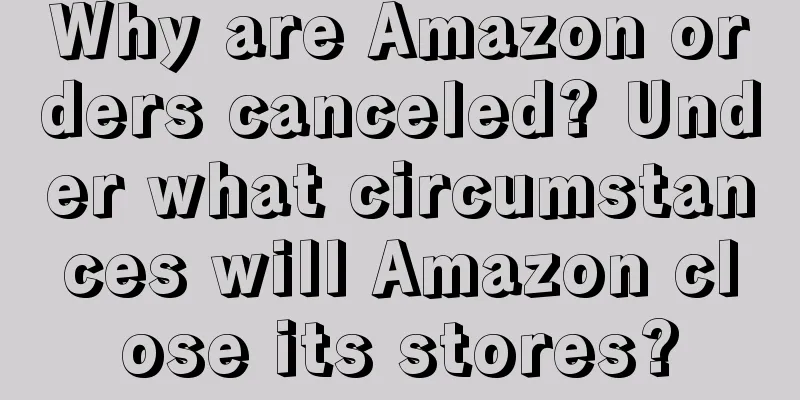
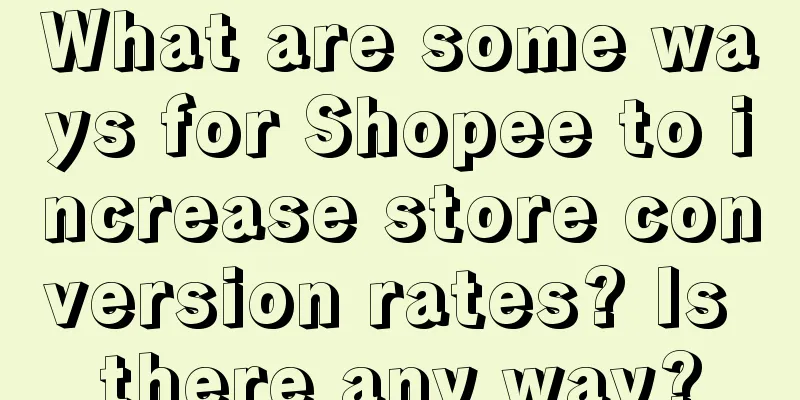

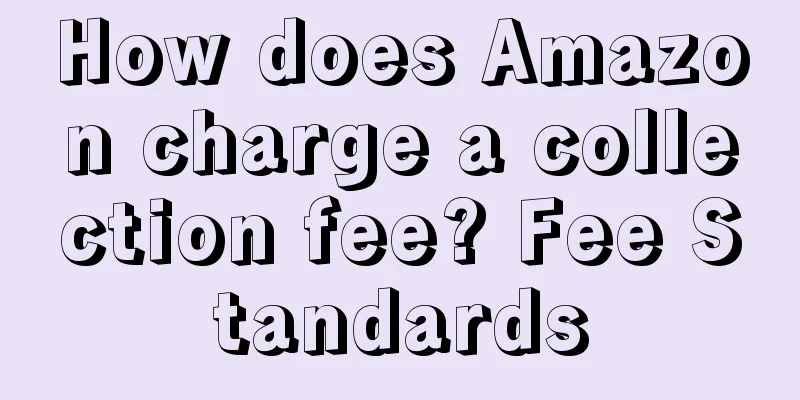
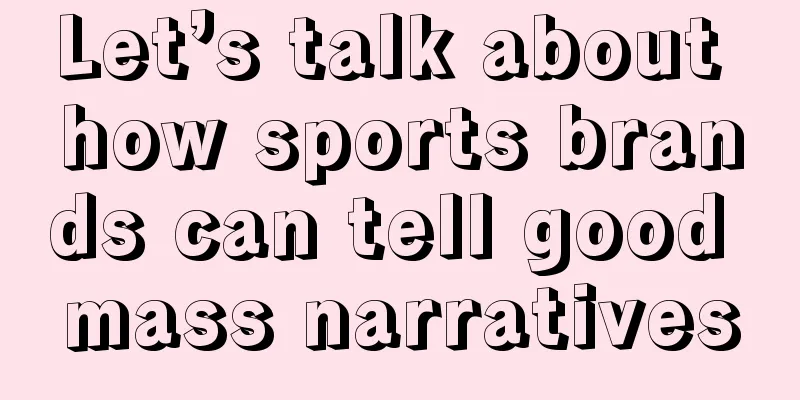
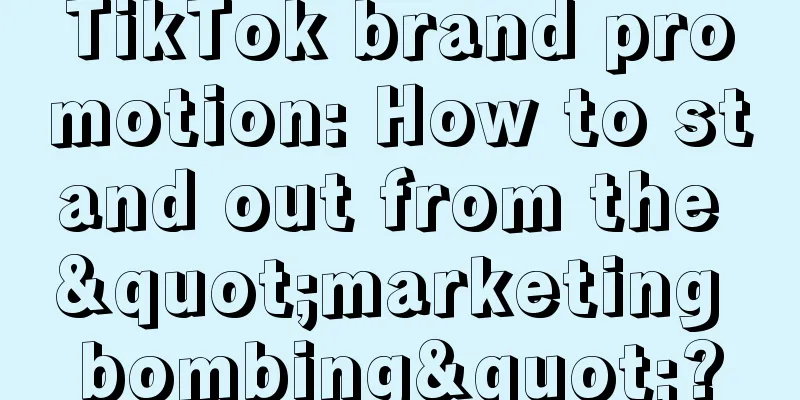
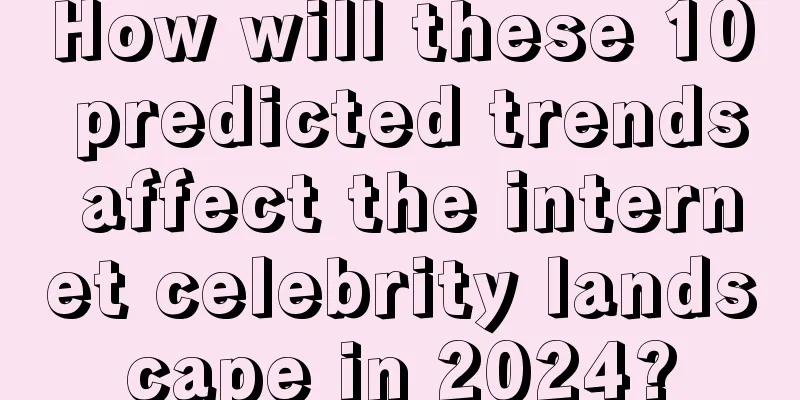
![[Experience Frontline] How does customer experience help companies capture customers’ decision-making minds?](/upload/images/67e774a349e8b.webp)
